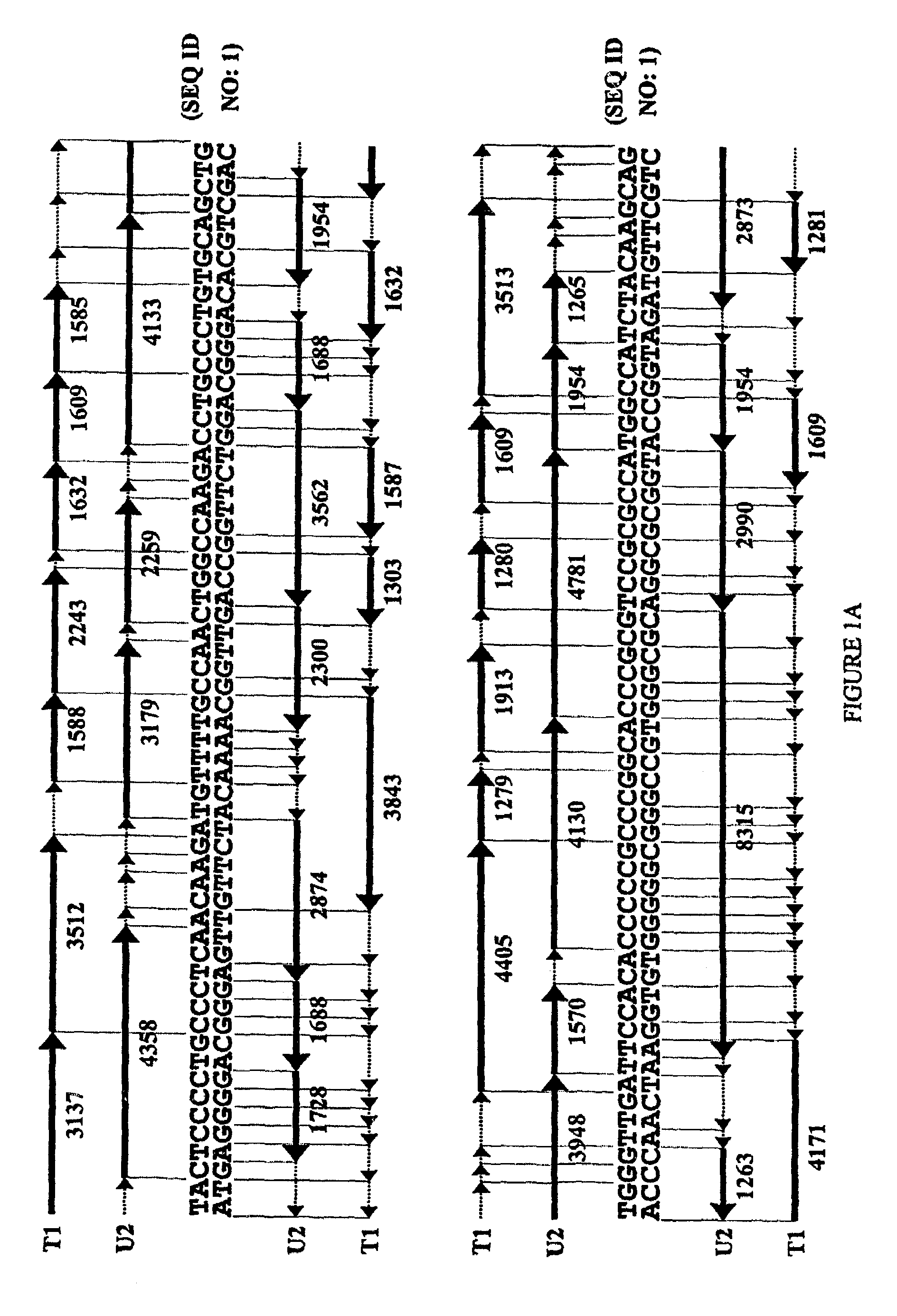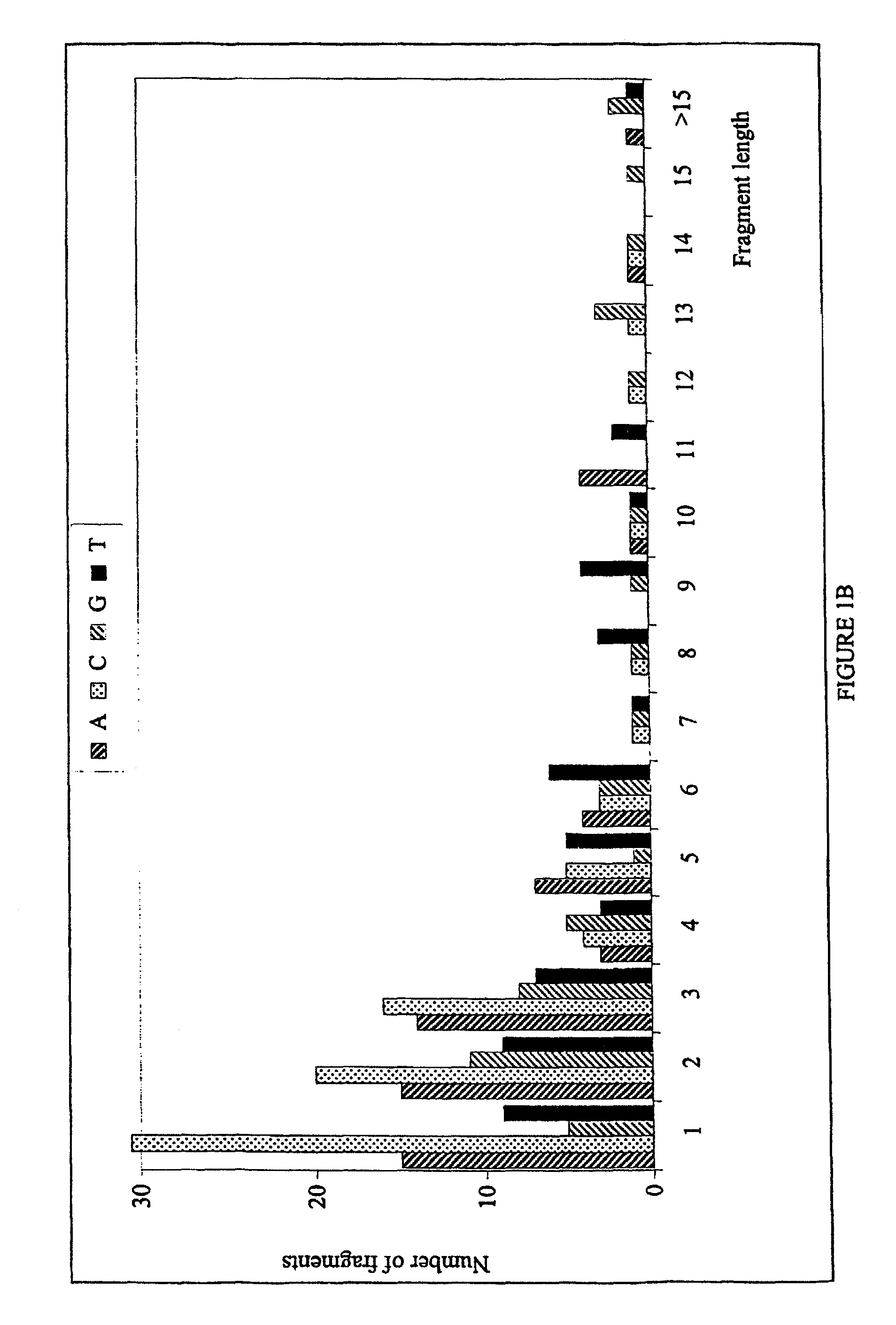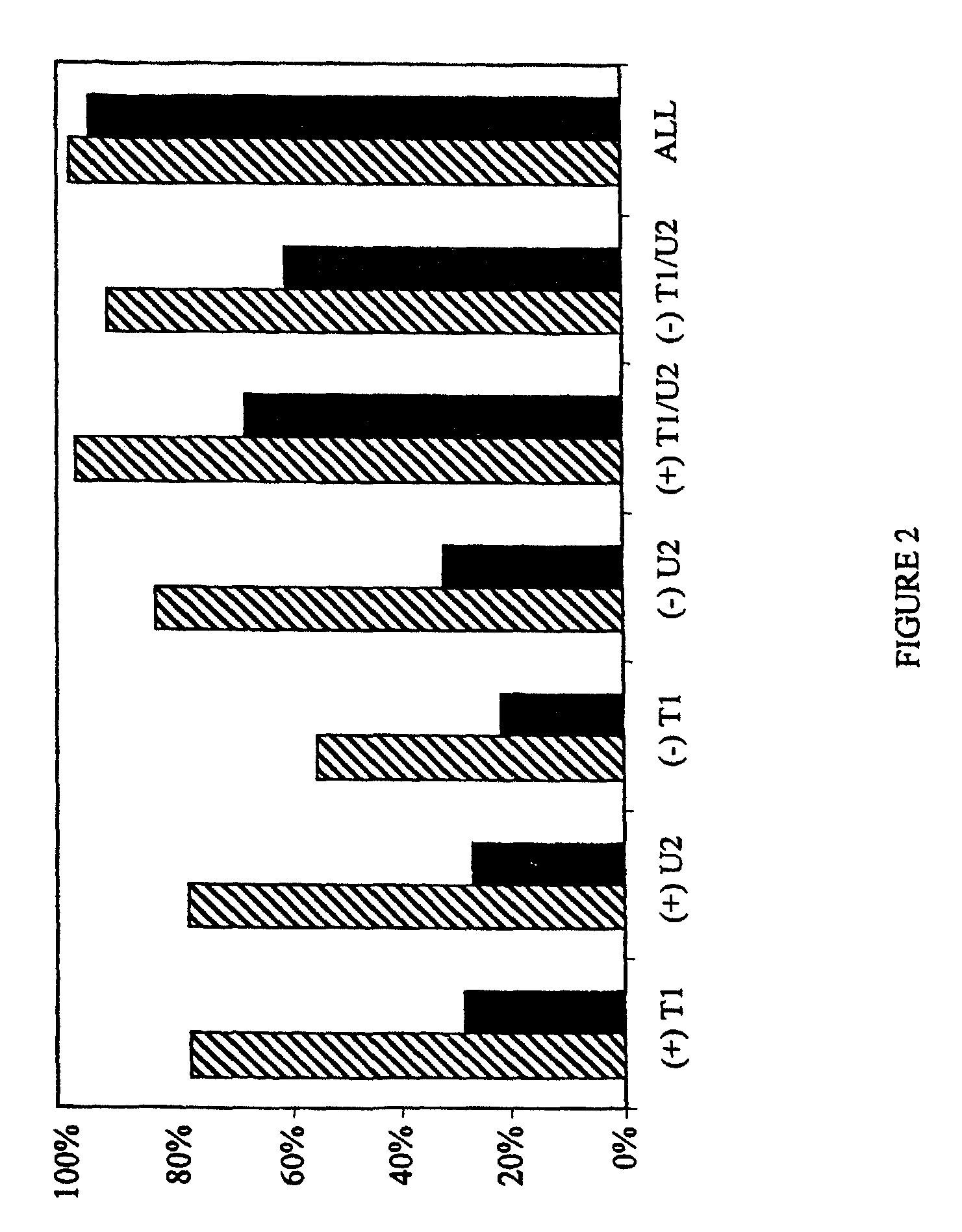Diagnostic sequencing by a combination of specific cleavage and mass spectrometry
a mass spectrometry and sequencing technology, applied in the field of nucleic acid-based diagnostic assays, can solve the problems of limited direct and indirect ms methodologies under the current performance conditions, poor applicability to chain lengths beyond 30–50 nucleotides, and ms analyses are considerably less informative, so as to achieve rapid and reliable results.
- Summary
- Abstract
- Description
- Claims
- Application Information
AI Technical Summary
Benefits of technology
Problems solved by technology
Method used
Image
Examples
example 1
Modeling the Diagnostic Sequence Analysis of a 1200 Base-pair Region of HIV-1
[0111]The methods of the present invention have been utilized on a 1200 base-pair sequence derived from human immunodeficiency virus type 1 (HIV-1; HXB2 isolate; Genbank accession number K03455; position 2161 to 3360). This sequence was used as a model in computer simulations to examine the overall performance of the method, as well as the occurrence of ambiguities. The selected region encompasses the entire protease gene and the first ˜270 codons of reverse transcriptase [compare with Hertogs K. et al., Antimicrob. Agents Chemother. 42: 269–276 (1998)]. The genotyping / re-sequencing of this domain of clinical isolates of HIV is of special interest in order to monitor the emergence of drug resistance-associated mutations. Single as well as multiple changes have been implicated in the decreased sensitivity towards the antiviral activity of protease and RT inhibitors [Hertogs K. et al., Antimicrob. Agents Chem...
example 2
Base-Specific Cleavage by Modification of the Template
[0117]The present example illustrates that the specificity of cleavage by a nucleolytic reagent may be further confined through the modification of the target template such that particular phosphodiester bonds resist cleavage. More particularly, it is demonstrated that RNase-A, which normally cleaves at the 3′-side of both C- and U-residues, becomes mononucleotide-specific when the target incorporates the 2′-deoxy analog of one of these nucleotides. A region of the plasmid vector pGEM3-Zf(+) (Promega, Madison, Wis.), encompassing the multi-cloning site as well as the phage T7 promoter sequences, was used as a model (see FIG. 5).
[0118]The first step towards the sequence analysis according to the present invention involved the amplification of the 158 base-pair test sequence. The reaction was carried out in a total volume of 50 μl using 12.5 pmol each of the forward and reverse primer, 200 μM of each dNTP, 0.25 μl Taq DNA polymeras...
example 3
Diagnostic Sequencing of the RNase-T1 Coding Region
[0121]The present example illustrates the application of the methods of the invention to the re-sequencing of a portion of the RNase-T1 coding region. We selected the RNase-T 1 coding region because of the availability of a collection of site-directed mutants [Steyaert J., Eur. J. Biochem. 247: 1–11 (1997)] which had previously been sequenced using the classical dideoxy chain termination method. The wild-type and mutant sequences, used in the present example, are shown in FIG. 7.
[0122]a. Analysis of the Wild-Type RNase-T1 Sequence
[0123]The experiments were performed essentially as described in Example 2. First, the selected wild-type RNase-T1 target sequences were amplified by PCR with the following primers:[0124]5′-CCGGATATAAACTTCACGAAGACGG (forward) (SEQ ID NO: 16)[0125]5′-GATAGGCCATTCGTAGTAGGGAGAGC (reverse) (SEQ ID NO: 17)
The resultant amplicon was subsequently re-amplified using either a forward or a reverse primer that incorpo...
PUM
| Property | Measurement | Unit |
|---|---|---|
| mass | aaaaa | aaaaa |
| mass | aaaaa | aaaaa |
| mass | aaaaa | aaaaa |
Abstract
Description
Claims
Application Information
 Login to View More
Login to View More - R&D
- Intellectual Property
- Life Sciences
- Materials
- Tech Scout
- Unparalleled Data Quality
- Higher Quality Content
- 60% Fewer Hallucinations
Browse by: Latest US Patents, China's latest patents, Technical Efficacy Thesaurus, Application Domain, Technology Topic, Popular Technical Reports.
© 2025 PatSnap. All rights reserved.Legal|Privacy policy|Modern Slavery Act Transparency Statement|Sitemap|About US| Contact US: help@patsnap.com



